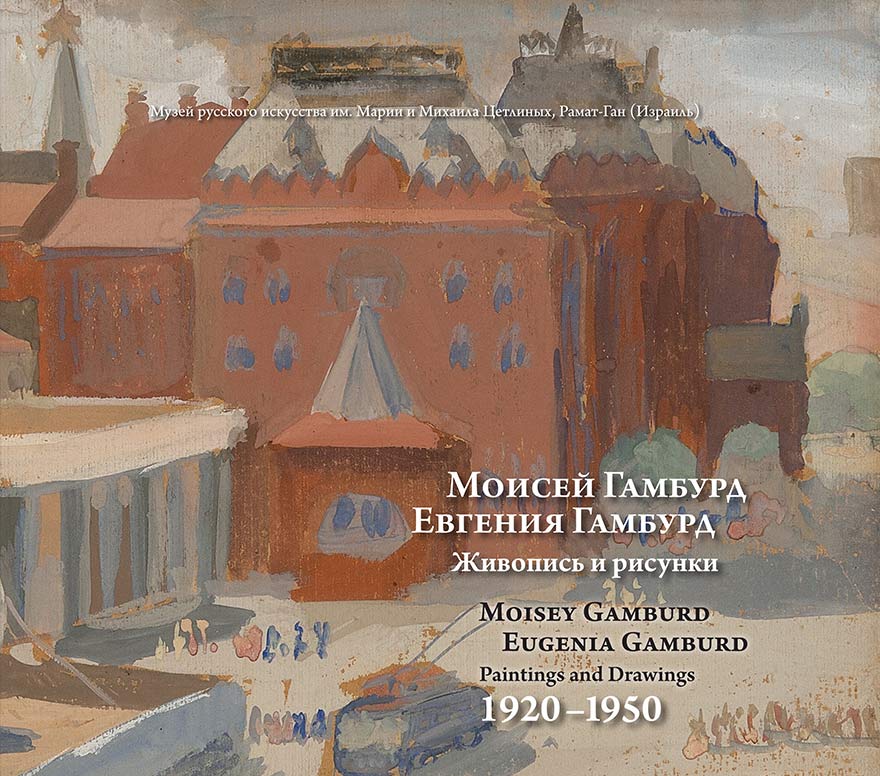Moisey (Max) Gamburd (1903–1954), one of the leading artists of the classic Moldavian art tradition, and his wife Eugenia (née Goldenberg, 1913–1956), a talented painter as well as theater and film artist, were born in Bessarabia (which became Moldova after its annexation by the Soviet Union in 1940). Moisey and Eugenia first studied drawing and painting at the Chisinau School of Arts. Moisey continued his training at the Royal Academy of Fine Arts in Brussels (1925–1930), where he studied under the Belgian Symbolist painter Constant Montald (1862–1944). Eugenia completed her education at the Academy of Arts in Bucharest (1934–1936), where she was taught by the distinguished Romanian post-Impressionist artist Jean Alexandru Steriadi (1880–1956).
Works by Moisey and Eugenia were exhibited in art galleries and museums in Chisinau and Bucharest. In 1993, the National Art Museum of Moldova organized a retrospective of works by Moisey Gamburd on the occasion of his 90th birthday, and in 2003 the National Art Museum of Moldova held a joint retrospective of the work of Moisey and Eugenia Gamburd. In 1984, Moisey Gamburd’s drawings were exhibited at the Nora Gallery in Jerusalem. The art critic Meir Ronen wrote that Gamburd’s drawings “are positively breathtaking” and “show him to be a veritable master in the modern academic tradition, a master of depiction of character and volumetric monumentality.”
Works by Moisey and Eugenia Gamburd are in the collections of the National Art Museum of Moldova and the National Archive of Moldova in Chisinau, the National Art Museum of Romania in Bucharest, the State Tretyakov Gallery in Moscow and in private collections around the world.
The exhibition at the Maria and Michael Zetlin Museum of Russian Art presents mainly the chamber works by Moisey and Eugenia Gamburd from the second half of the 1920s up to the early 1950s from the collection of Miriam Gamburd, the artists’ daughter and recognized Israeli sculptor, as well as from the collection of Michael Grobman and other private Israeli collections. Among Moisey Gamburd’s works are drawings of nudes from his early Belgian period and paintings and graphic portraits of relatives and friends, including well-known figures of Moldavian culture.
Eugenia Gamburd’s works include her best series of studies of Moscow (1943–1944), as well as post-war rural landscapes of Moldavia and fragments of the film Andriesh (1954) by the famous director Sergei Parajanov, for which Eugenia was the costume designer.
Most of the drawings and paintings by Moisey and Eugenia Gamburd in the exhibition can be categorized as “quiet art.” This informal trend emerged in the early 1930s in Stalinist visual culture, which was not homogeneous as is traditionally assumed. It included chamber works that were free of any specific ideology and dealt exclusively with aesthetic aspects as opposed to the pompous “baroque and neo-classicism of totalitarianism.” Stylistically, however, it remained firmly within the framework of Realism, since under the strict rules of censorship, even the slightest deformation of the image, the introduction of elements of primitivism, sketchiness or decorativeness, was cause enough to accuse the artist of “ignoring the traditions of realistic art.” With the passing of time, the chamber pieces of Moisey and Eugenia Gamburd have become the most interesting works from among their respective oeuvres.
